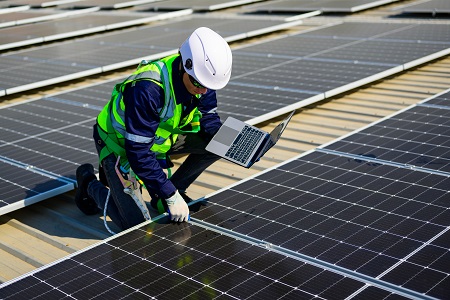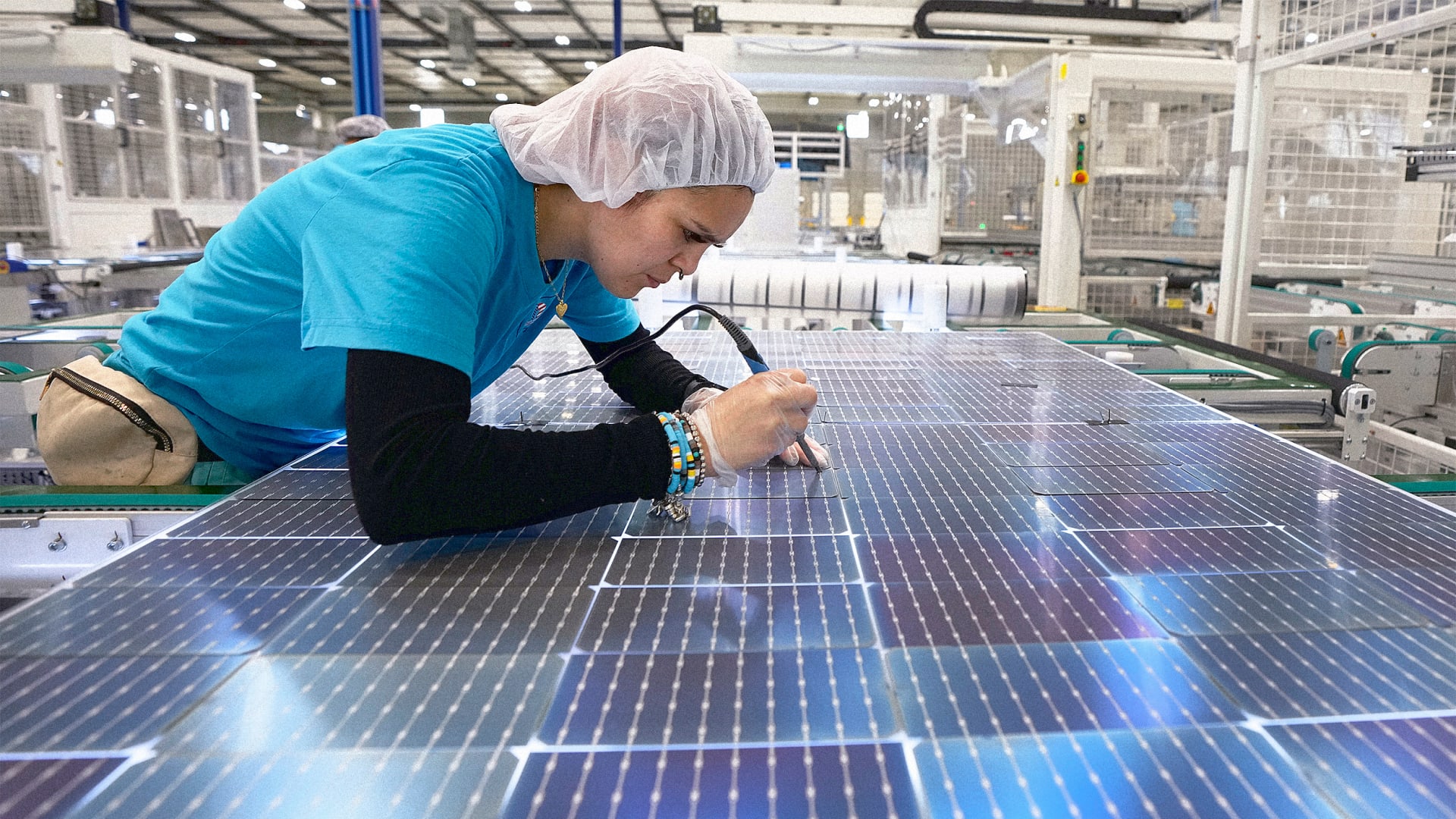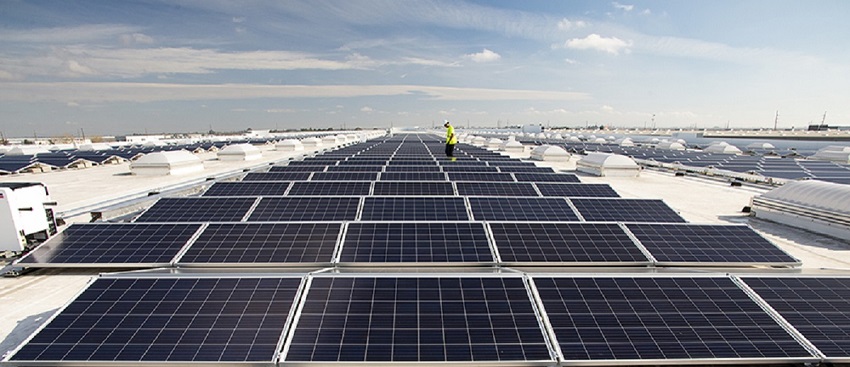Commercial Solar Installation PA: Our Company Specializes In The Installation And Management Of Photovoltaic Energy Systems
History and Development of Solar Panel Business
The beginning of photovoltaic panel companies can be traced back to the 1800s when Alexandre Edmond Becquerel discovered the photovoltaic impact. Would he have pictured how his discovery would revolutionize the way we harness energy?
Early Beginnings

In 1954, Bell Labs established the first useful solar battery. This marked a considerable turning point in the history of solar power. They were initially used to power space satellites, but who knew this was just the start?
Advancement and Growth
- In the 1970s, an energy crisis led to increased interest in renewable resource sources, including solar power.
- By the 1990s, advancements in technology and increasing ecological awareness resulted in the development of solar panel companies globally.
A New Era
As we got in the 21st century, the solar market witnessed a rapid growth. The need for clean and renewable resource produced a new age in the photovoltaic panel industry.
Remarkable Truths
- The world's first solar energy station was built in 1982 in Hisperia, California.
- By 2019, solar power had actually become the world's fastest-growing source of power.
The journey of solar panel companies has been exceptional, hasn't it? The future holds enormous potential, with continuous developments paving the method for a sustainable future. Can we visualize a world powered completely by solar energy?
Moving Forward
Today, photovoltaic panel companies continue to innovate, pursuing more efficient and economical solutions. The advancement of solar energy has come a long way, and yet, the journey has just begun.
The Core of Photovoltaic Panel Production
Ever wonder what enters into creating those shiny, sun-loving solar panels? The procedure is as remarkable as completion item (Solar Installers Pennsylvania). High-purity silicon, the primary component in photovoltaic panels, goes through numerous improvements to ensure its efficiency and sturdiness
From Sand to Silicon
Crystalline silicon, the foundation of a lot of solar panels, stems from easy sand. It's a remarkable journey, isn't it? The sand undergoes a high-temperature reaction with carbon to form silicon. This isn't simply any silicon. The silicon used in solar panels is "solar-grade," with a purity of 99.9999%. It's this purity that makes it possible for the panels to efficiently transform sunshine into power.
Ingot Development
Once the silicon is pure enough, it's time to form ingots. Image a large, round block of solid silicon. How is this accomplished? Through a procedure called Czochralski procedure, where the silicon is melted and then gradually recrystallized. It's a sluggish dance of science, resulting in a solid item that is nearly as pure as the raw silicon itself.
Slicing into Wafers
The ingots are then sliced into wafer-thin pieces, like slicing a loaf of bread. Each piece is a prospective solar cell, waiting to harness the power of the sun. Did you understand that the silicon wafers are just about 200 micrometers thick? That has to do with half the thickness of a human hair! The process requires accuracy and perseverance, however the result is a set of wafers all set to be developed into solar batteries.
Creating Solar Battery
With the wafer ready, it's time for the magic to happen. The silicon wafer is 'doped' with other components like phosphorous and boron to produce an internal electric field. It's this field that allows the conversion of sunshine into electricity. Complex, isn't it?
Assembly and Quality Assurance
Solar cells are like puzzle pieces that come together to form a solar panel. The cells are soldered together in a grid-like pattern, then covered with a protective layer of glass. The final step includes strenuous quality control checks. It's vital that every solar panel carries out at its peak, wouldn't you concur?
Expert Tip
Constantly remember that even the most optimally made photovoltaic panel can lose effectiveness due to dirt and debris build-up. Regular cleansing can considerably enhance your panels' efficiency.
Understanding the Ecological Effect of Solar Panel Companies
Ever contemplated the ecological footprint of a photovoltaic panel company? Green innovation, such as solar, has transformed our energy landscape, however what about the behind-the-scenes impact?
The Production Process: A Double-Edged Sword
The production procedure for solar panels demands a substantial amount of energy. This process, referred to as 'em bodied energy', can be viewed as a kind of 'energy financial obligation'. It's a little like obtaining today's sunshine to power tomorrow's energy needs. Stress not, the energy payback time is often much shorter than you 'd believe!
- The energy payback duration for photovoltaic panels is usually 1-4 years.
- After this period, the energy produced is essentially carbon-free.

Life After Decommission
And what occurs when a solar panel reaches completion of its life expectancy? Can it just be tossed into the trash? No, that would not be really green, now, would it?
A feasible solution is recycling. While photovoltaic panel recycling is still in its infancy, it holds a world of potential. Recycling not just keeps products out of land fills however likewise reduces the need for brand-new raw materials.
Responsible Sourcing: More Than A Buzzword
Where does the silicon originated from, you read more ask? The market's need for silicon and unusual minerals can lead to devastating mining practices. Responsible sourcing is for that reason imperative to lower hazardous environmental impacts.
Decreased Carbon Emissions: The Larger Image
Let's not forget the bigger picture: solar power significantly lowers carbon emissions. When set up, solar panels create tidy, sustainable energy, offsetting their preliminary production footprint.
In brief, the ecological impact of photovoltaic panel companies is a complicated problem. However, with responsible practices, the promise of a cleaner, greener future is well within our grasp.

Financial Performance and Market Share of Photovoltaic Panel Business
Ever questioned why some solar panel business - Best Solar Panel Company In PA beat others in the market? What sets them apart? The key lies in their financial performance and market share
Financial Performance: A Vital Indicator
Financial performance plays a pivotal role in the success of any organization. For photovoltaic panel business, it's no various. Strong monetary efficiency enables these companies to buy advanced innovation, research study, and advancement, therefore creating top quality, effective solar panels.
But how do they achieve this? With a concentrate on expense efficiency and strategic financial investments. Companies that manage to lower production expenses without jeopardizing on quality tend to fare much better in the market.
Market Share: A Measure of Success
Market share, on the other hand, is a direct reflection of a business's appeal among customers. A high market share implies more house owners are choosing their photovoltaic panels over rivals.
So, what's the secret dish for acquiring a larger market share? It boils down to customer satisfaction and brand credibility. Companies that prioritize customer needs and maintain a favorable brand image are most likely to record a bigger share of the market.
- Consumer Complete satisfaction: Solar panel companies that provide dependable products and exceptional customer support tend to have higher client complete satisfaction rates.
- Brand name Track record: A strong brand track record is built over time through constant delivery of quality product or services.
Financial Performance and Market Share: The Symbiotic Relationship
Surprisingly, the relationship in between financial performance and market share is not one-sided. They feed off each other. A strong monetary efficiency can increase a company's market share, while a high market share can enhance financial efficiency.
As a solar panel business, stabilizing these 2 elements is essential for long-term success. A business that neglects either of them may find it challenging to maintain its position in the competitive solar industry.
The Takeaway
So, what does all this mean for you? Whether you're a homeowner wanting to install solar panels or an investor considering the solar industry, comprehending the financial efficiency and market share of photovoltaic panel business is vital. They are key indications of a company's health and potential for future development.